This quick and easy guide will teach you how to cut carrots into different shapes like rounds, half moons, matchsticks, and more. Add them to soups, stews, smoothies, and sauces. As a bonus, find out how to store carrots so they last longer!
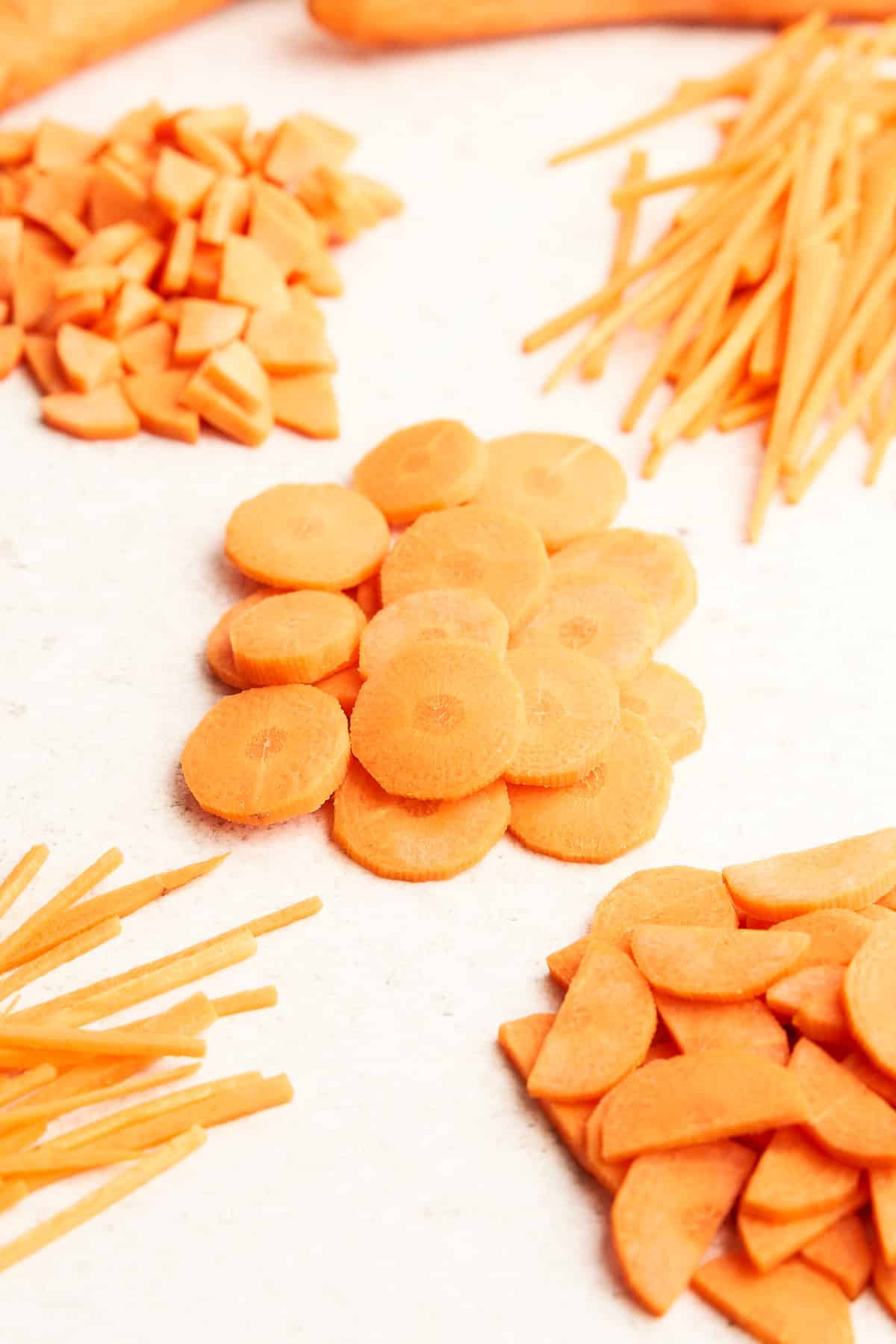
What are carrots?
Carrots are a type of root vegetable that is most often orange in color. But, did you know there are other colors like black, purple, red, white, and yellow?
Much like onions and celery, carrots are added to recipes for a savory, slightly sweet element. In fact, they’re part of the infamous mirepoix trio, which also includes onions and celery.
Whether you’re looking to eat them fresh, grill them, or sauté them, you’re really going to want to know how to cut carrots into different shapes and sizes! Not only does it affect the flavor and texture, but it also enhances the presentation of your favorite dishes.
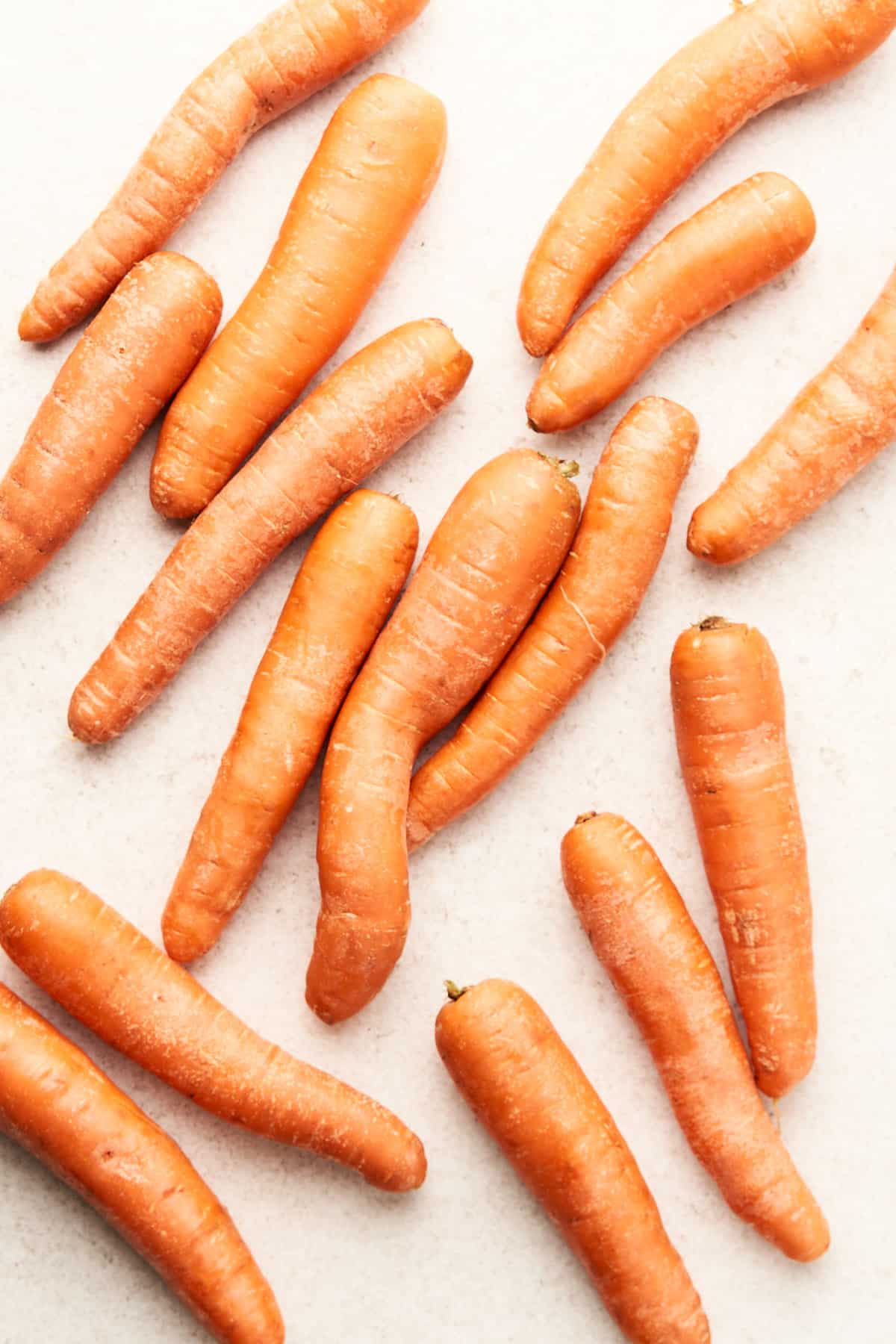
How to cut carrots
It doesn’t matter if you’re making a mirepoix, blanching them, or adding them to a packed lunch, knowing how to cut carrots is a basic kitchen skill that will take your cooking to the next level! Just make sure your knife is sharpened and your cutting board is secured in place before starting.
Scrub or peel
You have two options for carrots — scrubbing or peeling. Either way, give them a good wash. Then, use a vegetable peeler to remove the skin if you’d prefer.
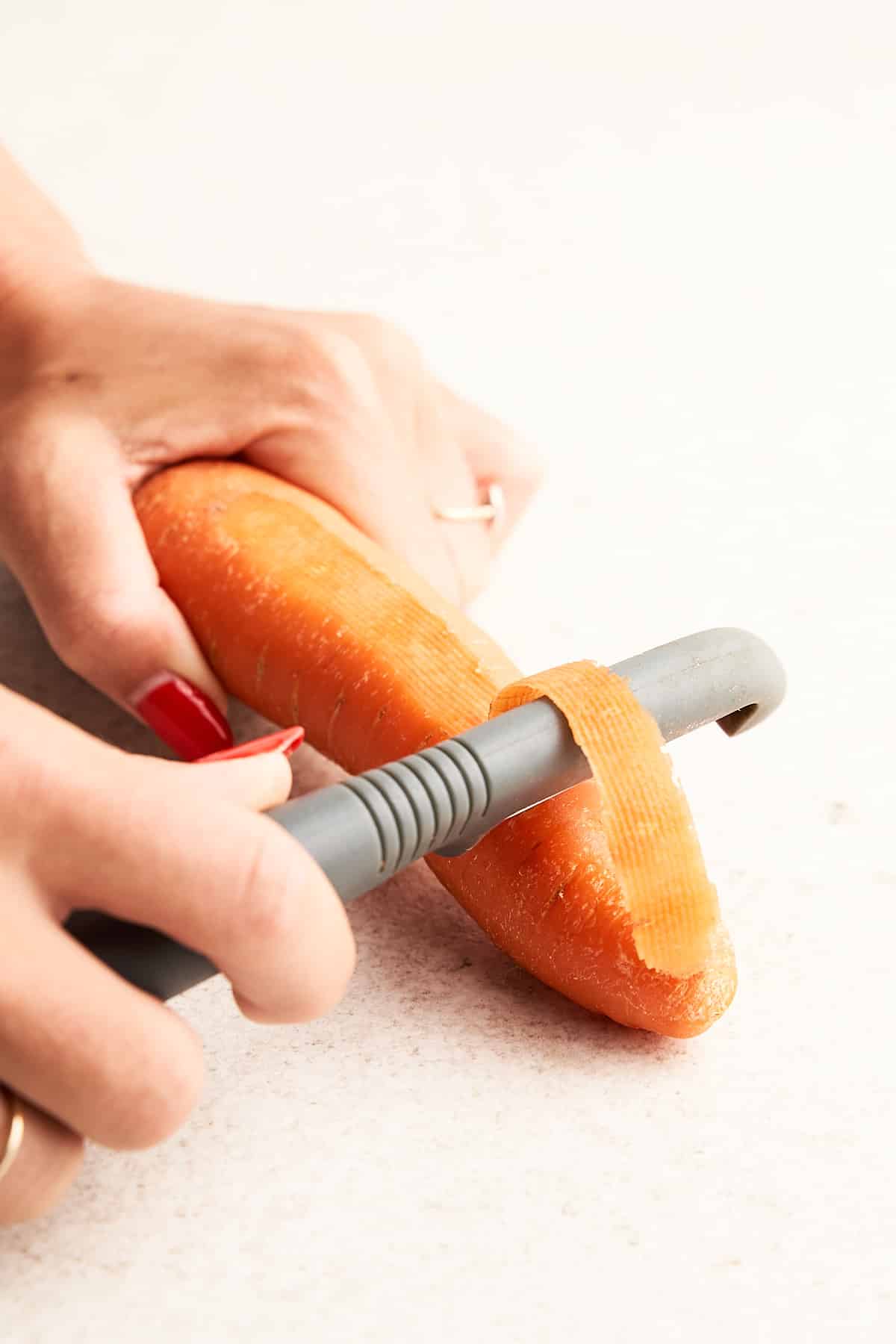
Option 1: Rounds
With the carrot perpendicular to you, firmly grasp one end with your non-dominant hand. Using a rocker motion, slice the carrot into rounds as thickly or as thinly as the recipe you’re making calls for. You can also rotate the carrot slightly to make diagonal cuts.
If you have one, a mandolin slicer will achieve a more even thickness, but remember to keep your fingers well away from the blade! Use your carrot rounds for recipes like stews, stir-fries, soups, garden salads, or dehydrated carrot chips.
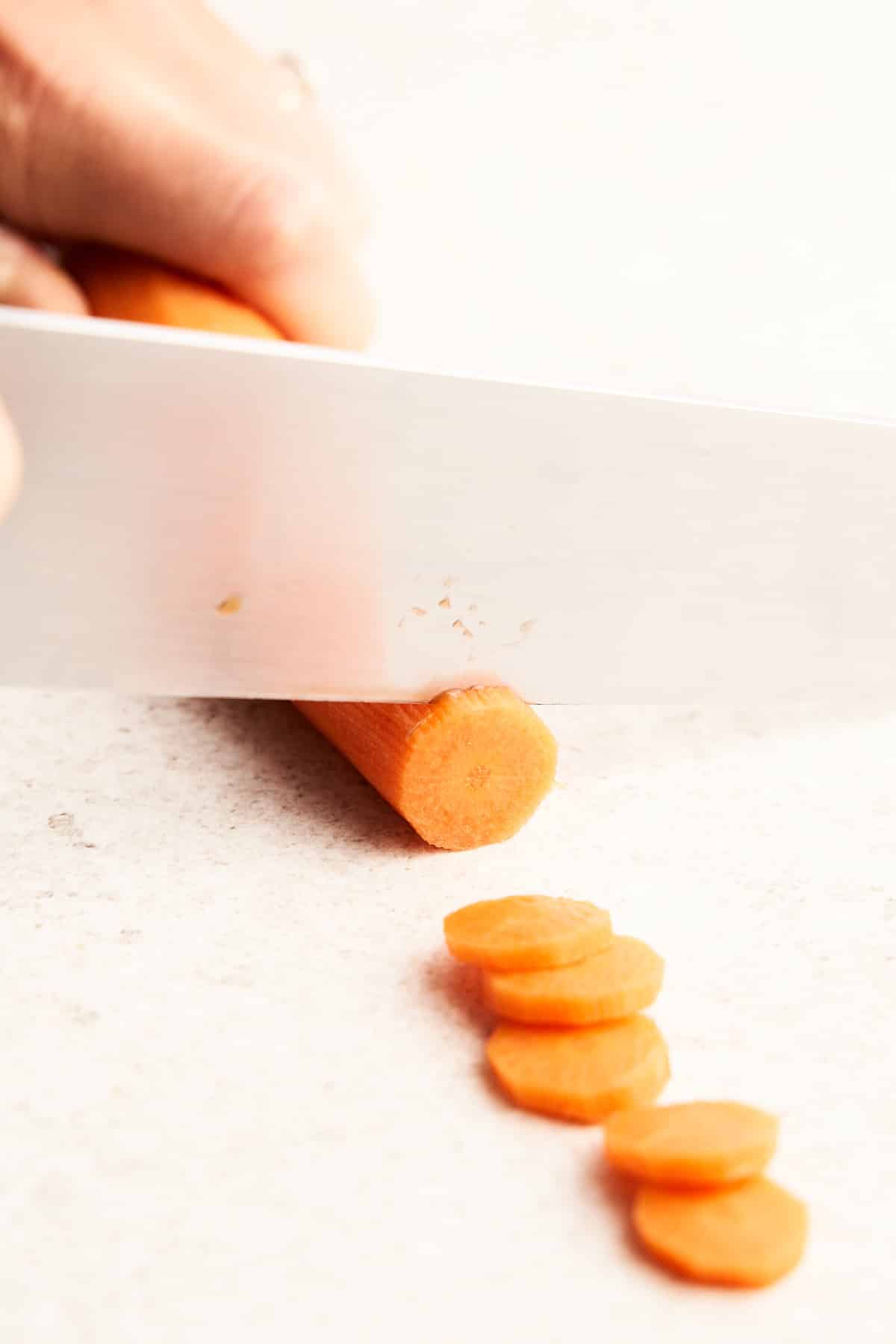
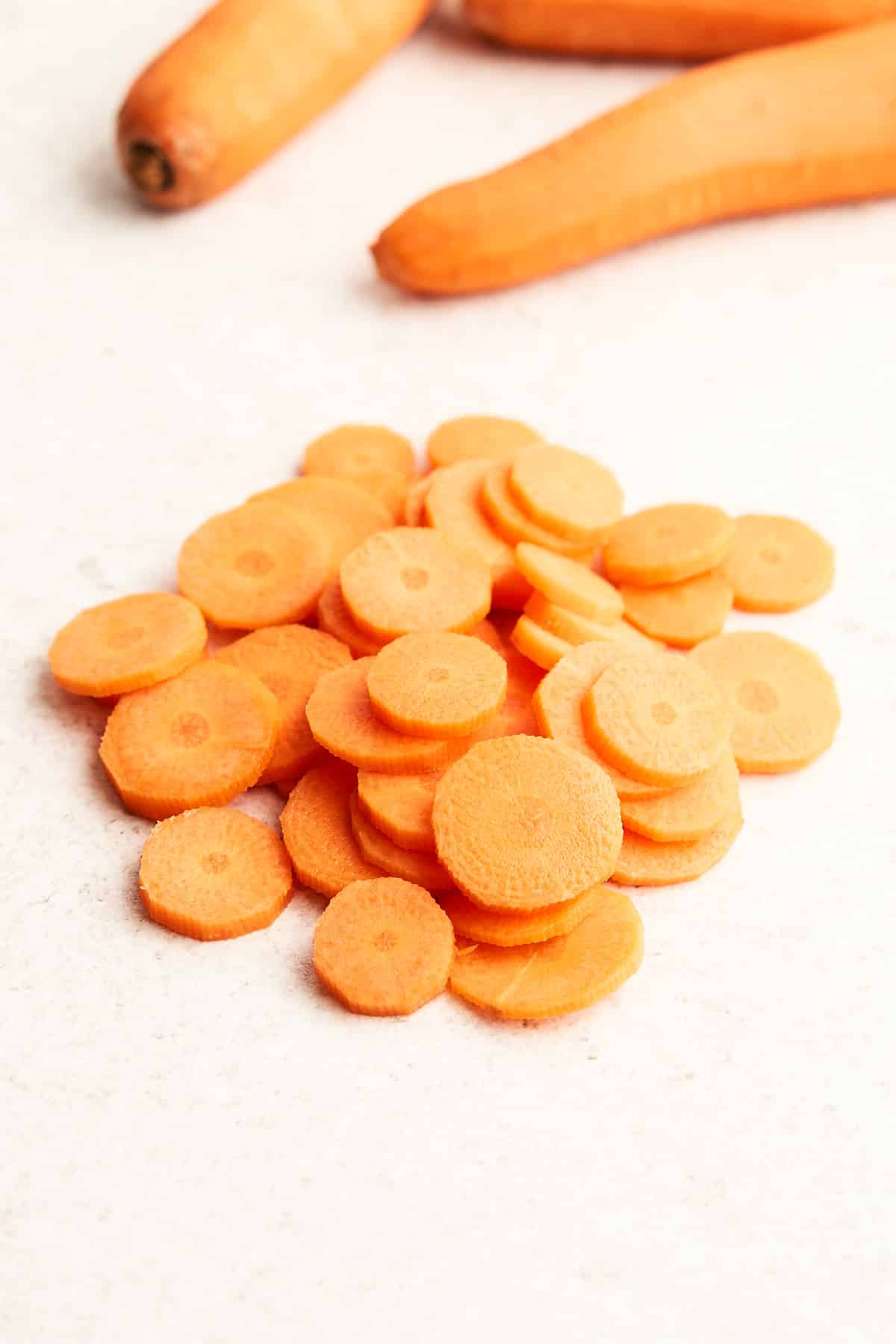
Option 2: Half moons
With the carrot facing parallel to you, carefully slice it in half lengthwise, using your palm to press the knife all the way through. Place each half flat-side down, and rotate it the same as for the rounds. Slice the carrots into half-moon shapes as thickly or as thinly as you’d like.
Once again, you can use a mandolin for this process, just be careful and watch those fingers! Half-moon carrots are perfect for stir-fries, soups, salads, and stews!
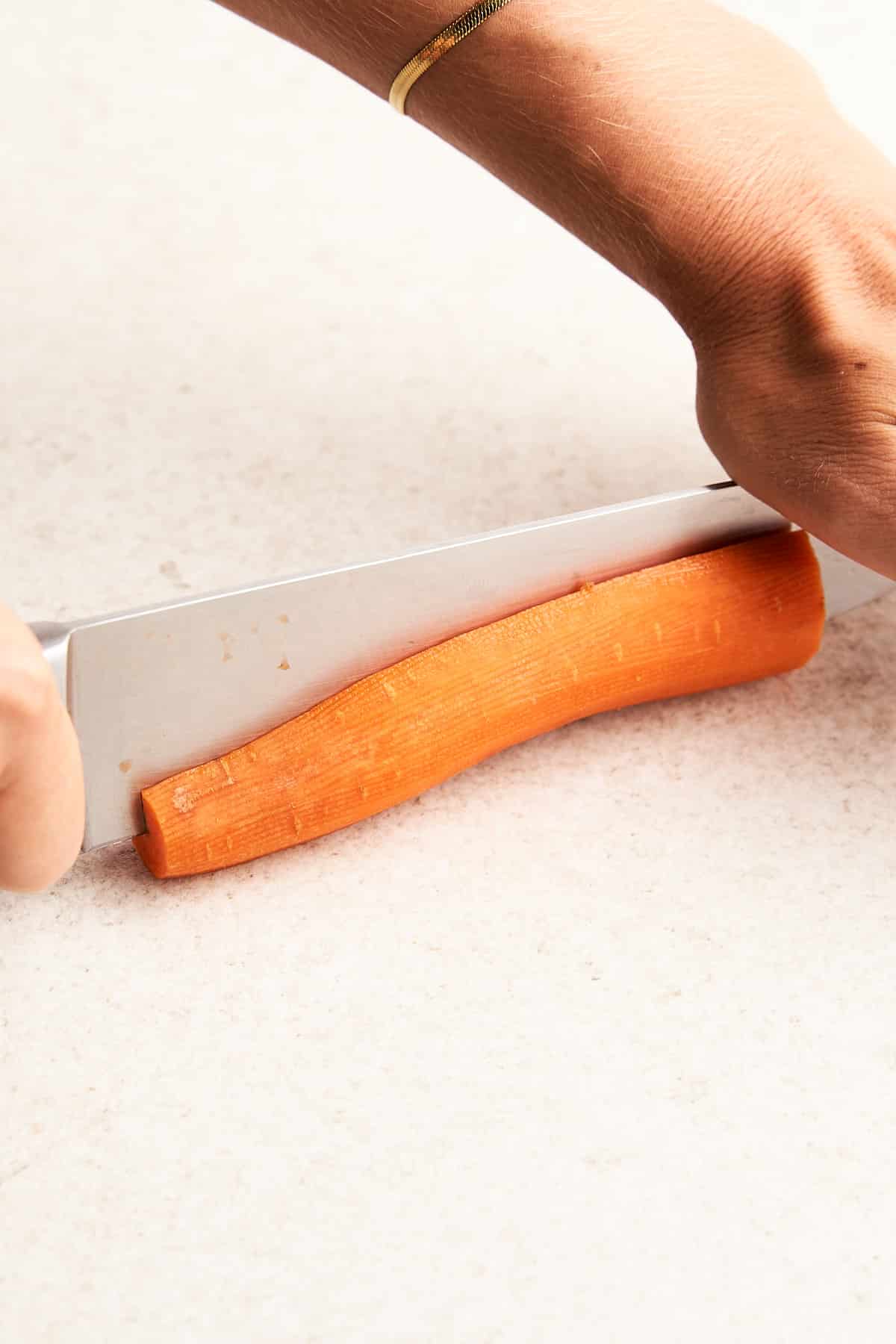
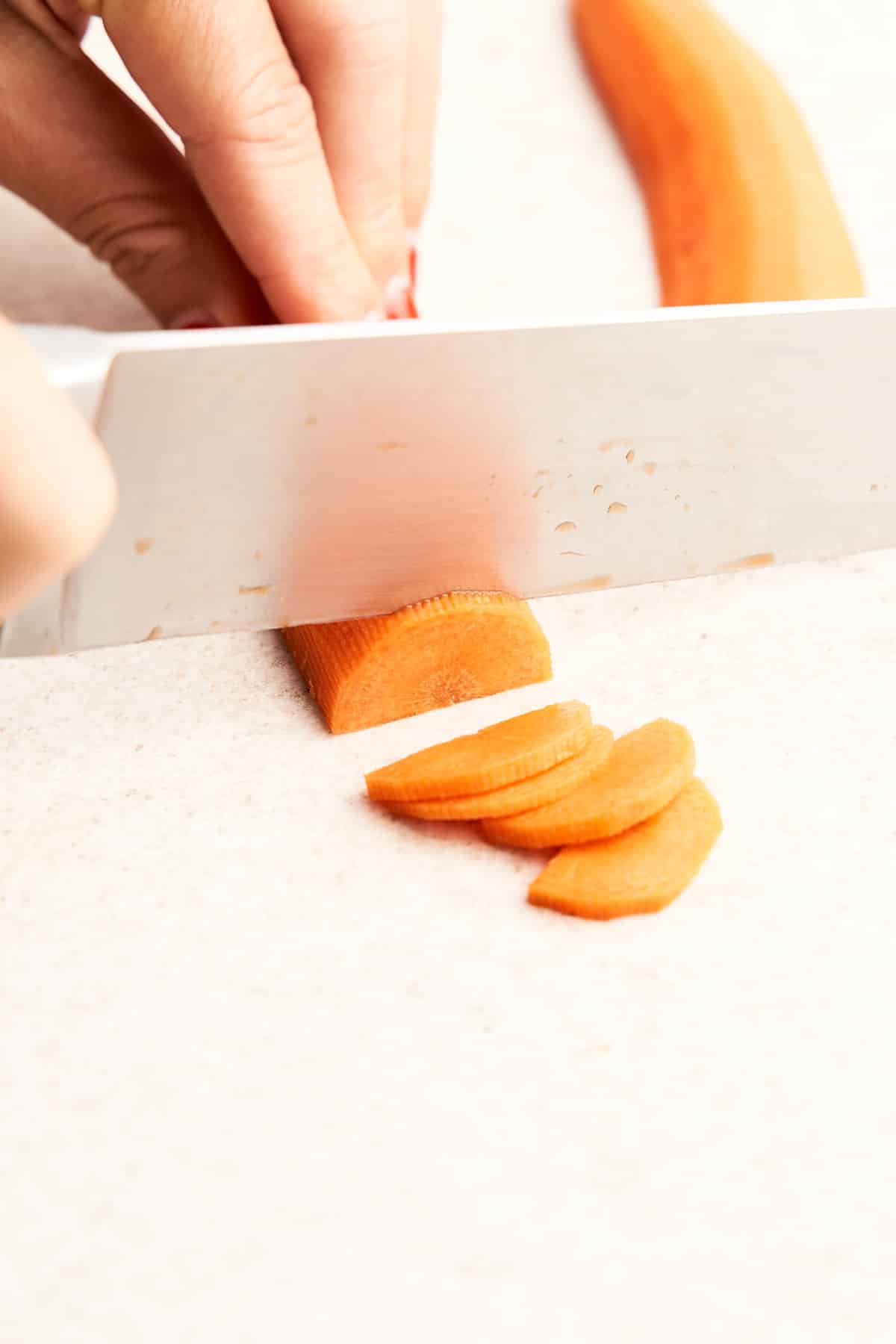
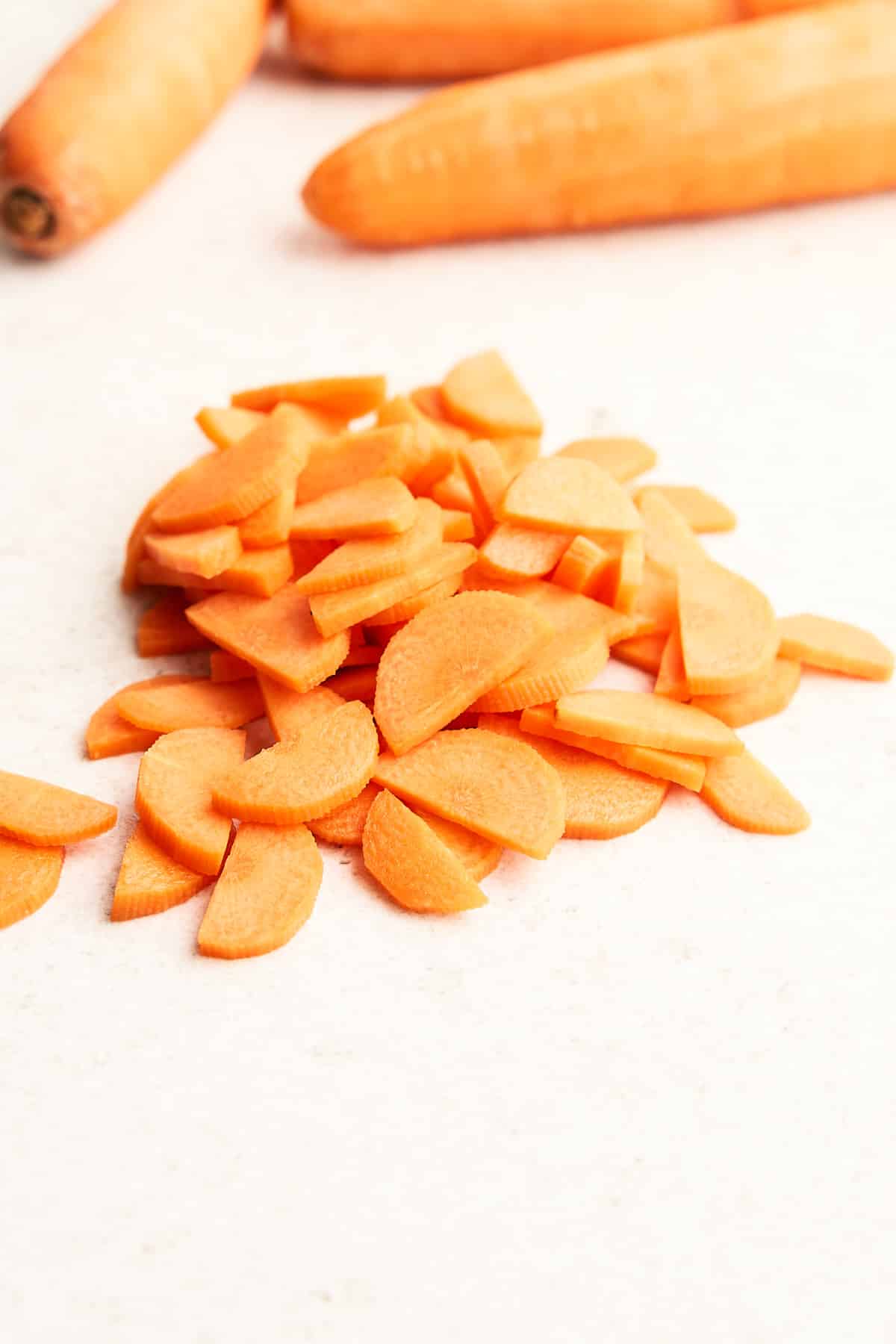
Option 3: Diced
Start by cutting the carrot into halves just like before. Then, cut the carrots into quarters. If they are quite large, make 3-4 cuts. Rotate the carrot sticks, and dice them into smaller pieces using a rocker motion with your knife.
Remember, use a claw grip and continuously move your fingers back as you’re cutting. Diced carrots are great for soups, stews, lentil loaves, chopped salads, and hearty pasta sauces.
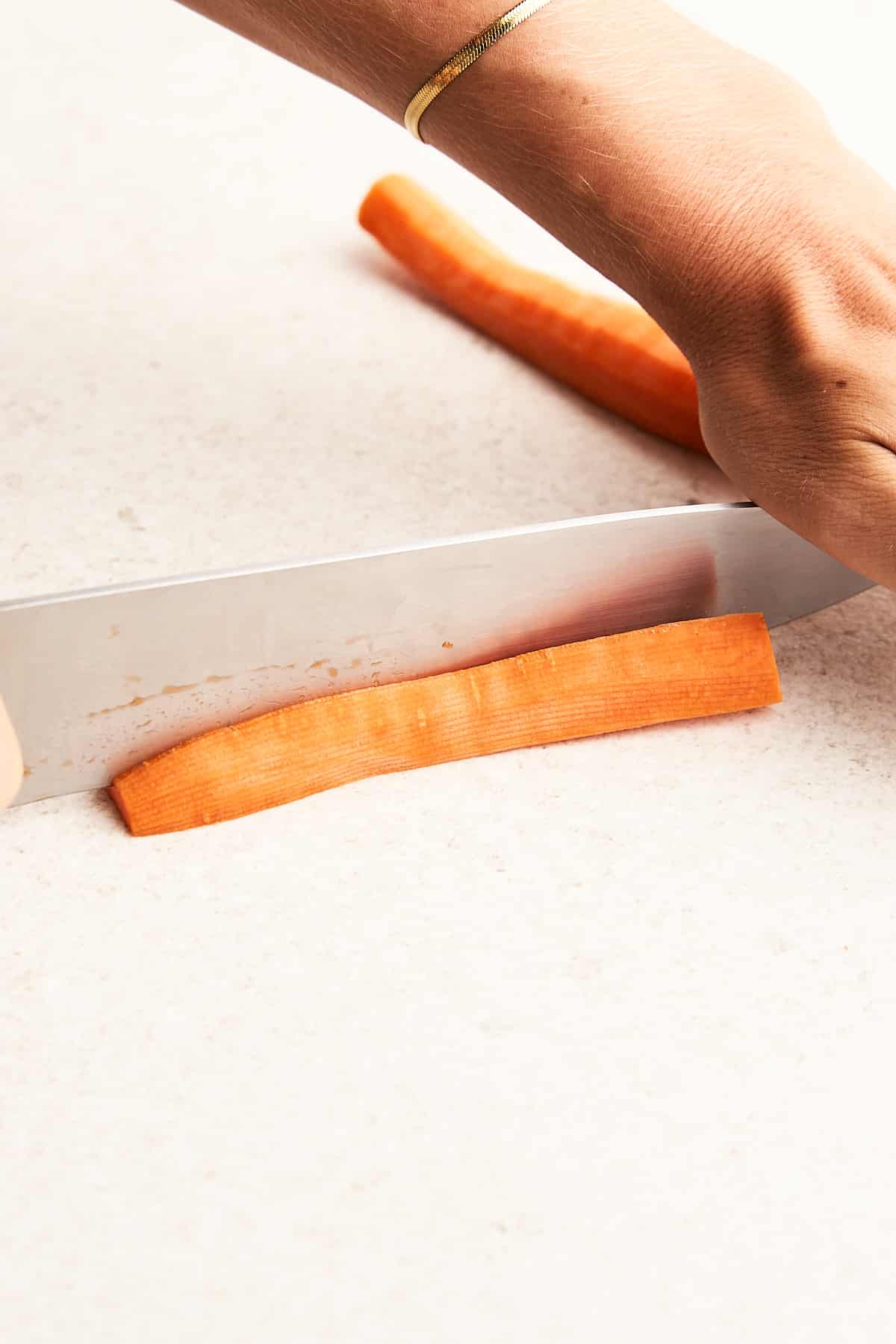
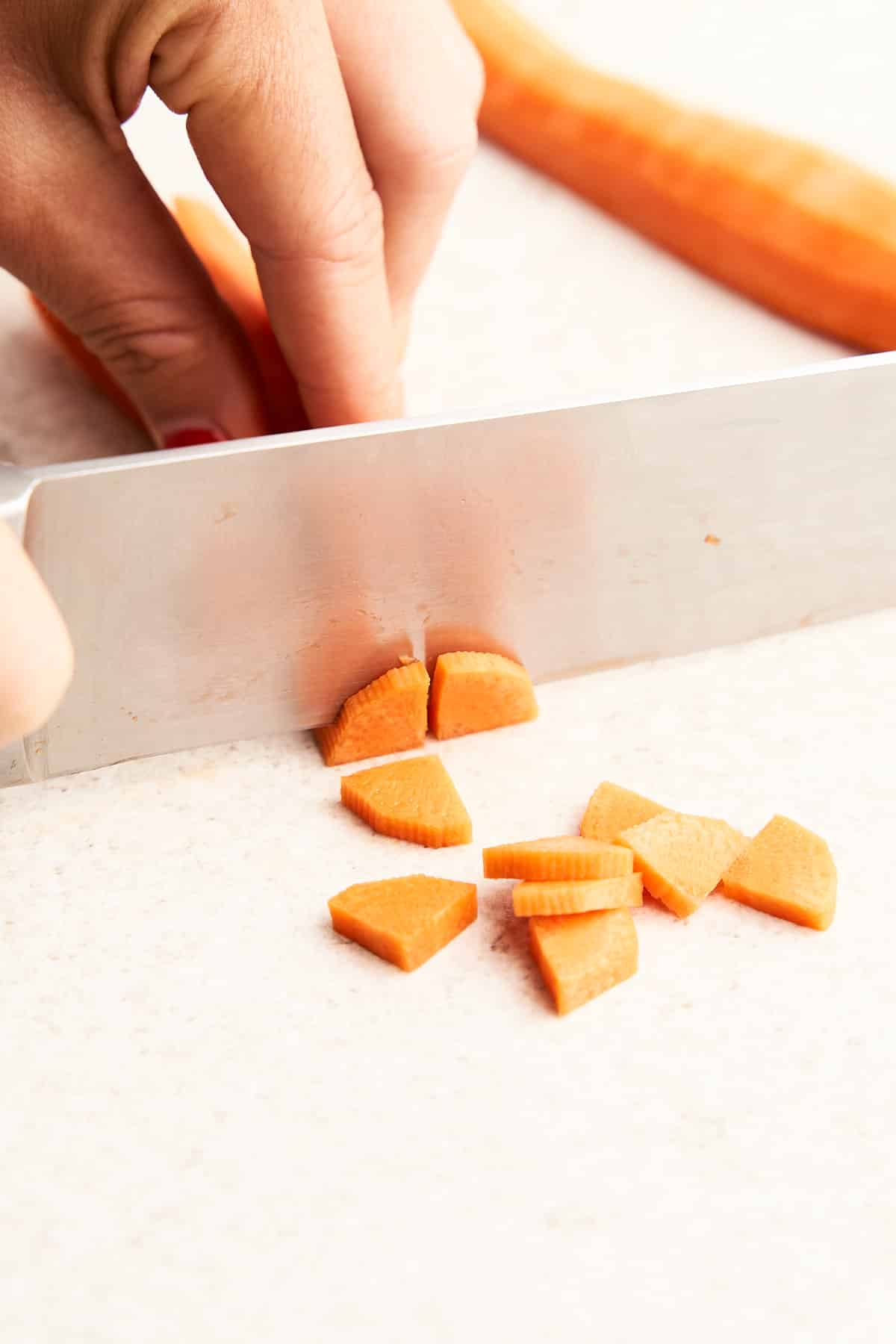
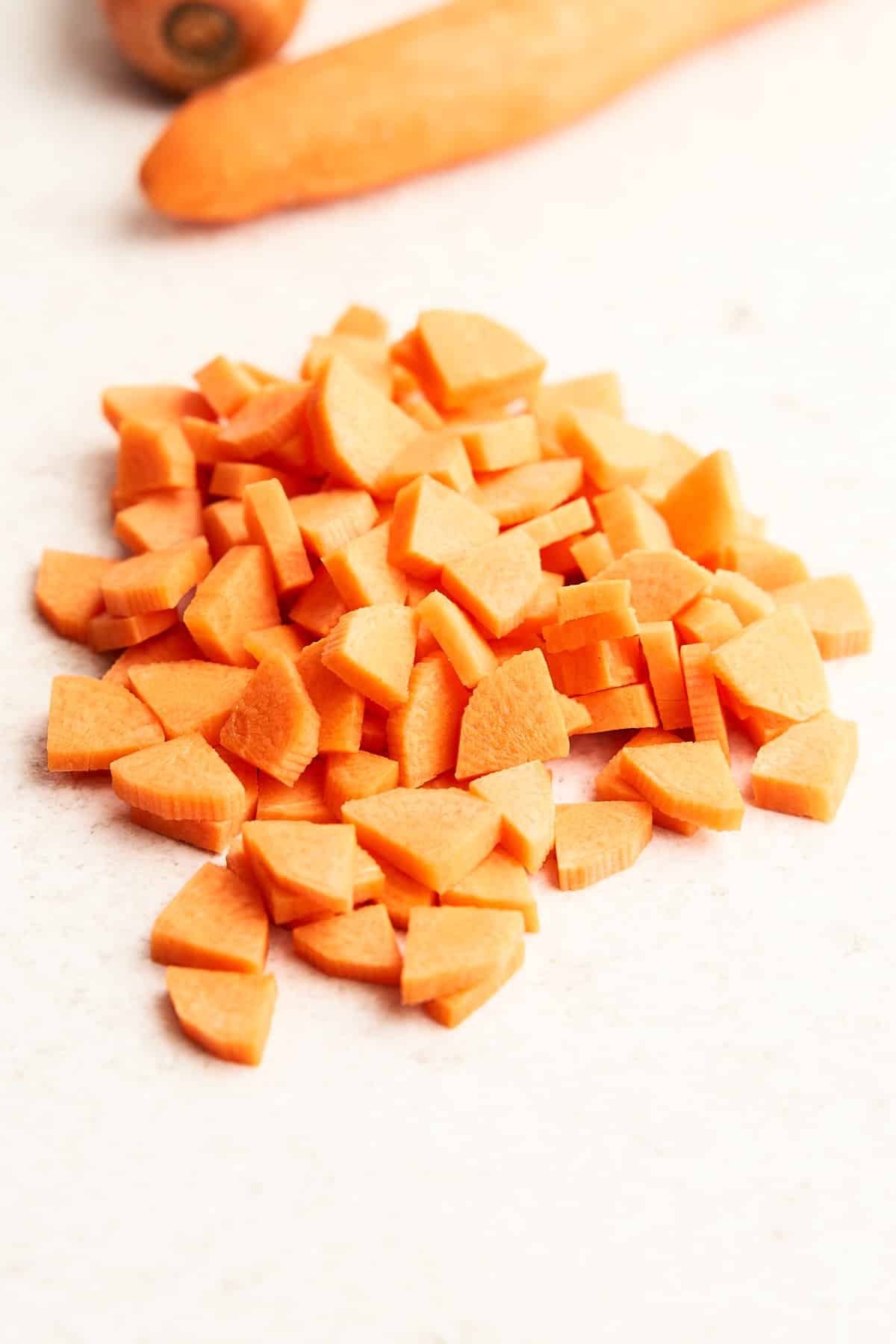
Option 4: Julienned
To julienne a carrot, trim the ends off of the carrots, then cut them crosswise into 2 or 3 pieces (it depends on how big your carrots are). Thinly slice the pieces on one side, then flip the pieces on the flat side. Slice lengthwise to form thin slabs, lay each one flat-side down, and cut it into thin matchsticks.
Once you feel more comfortable, you can stack the slabs to make cutting faster. You can also use a julienne peeler if you have one for a more convenient option! Add julienned carrots to salads or stir-fries. (These are great in veggie wraps!)
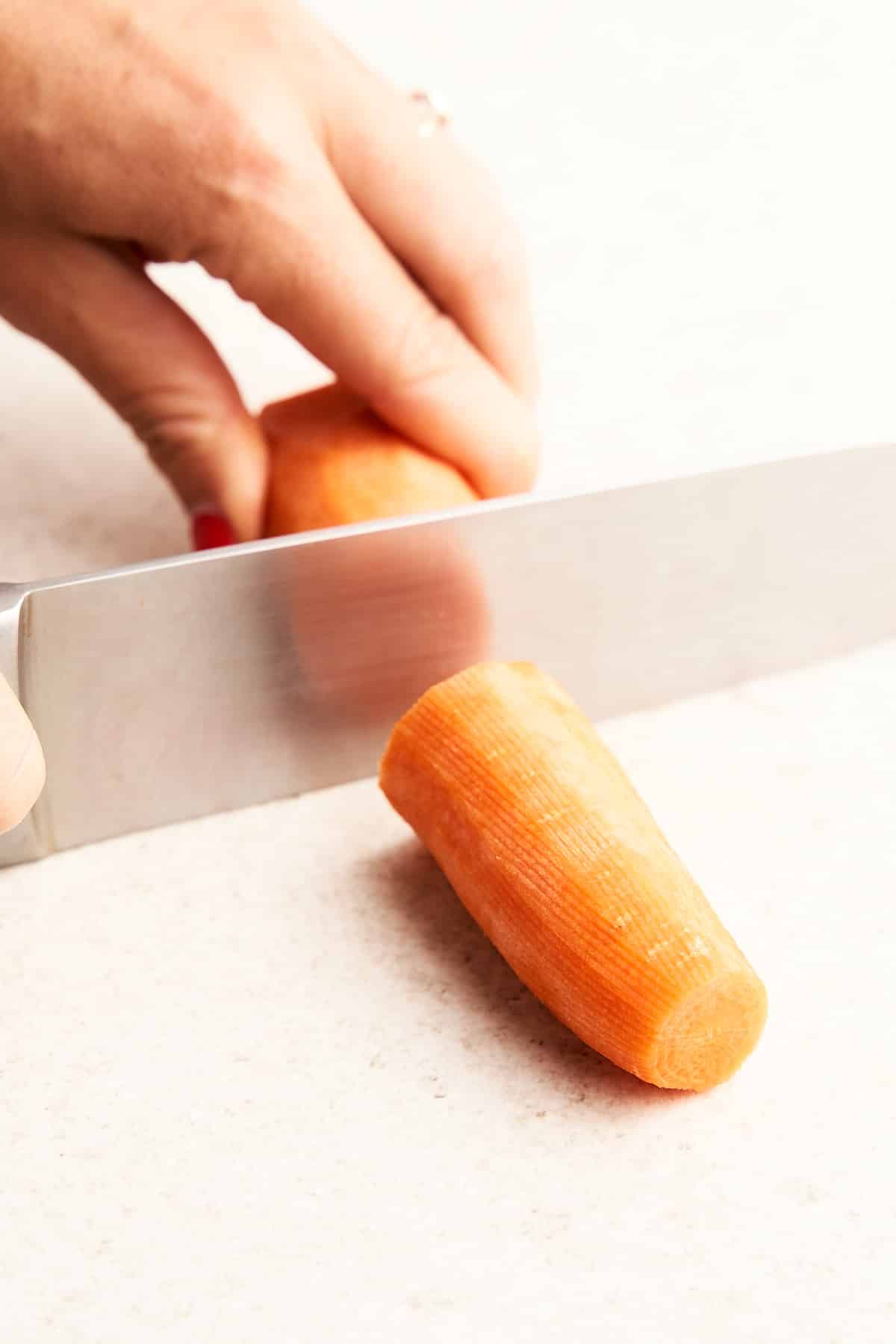
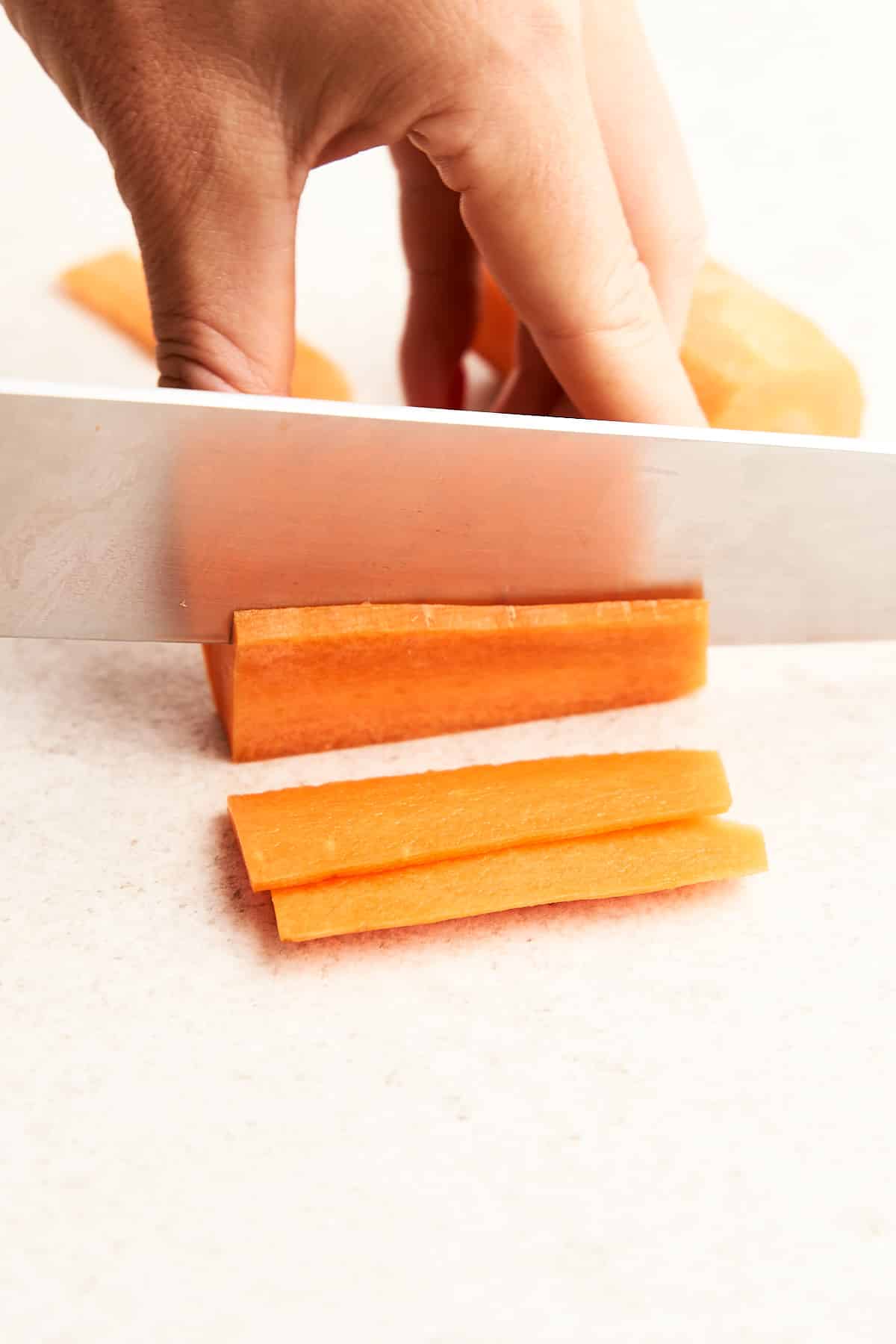
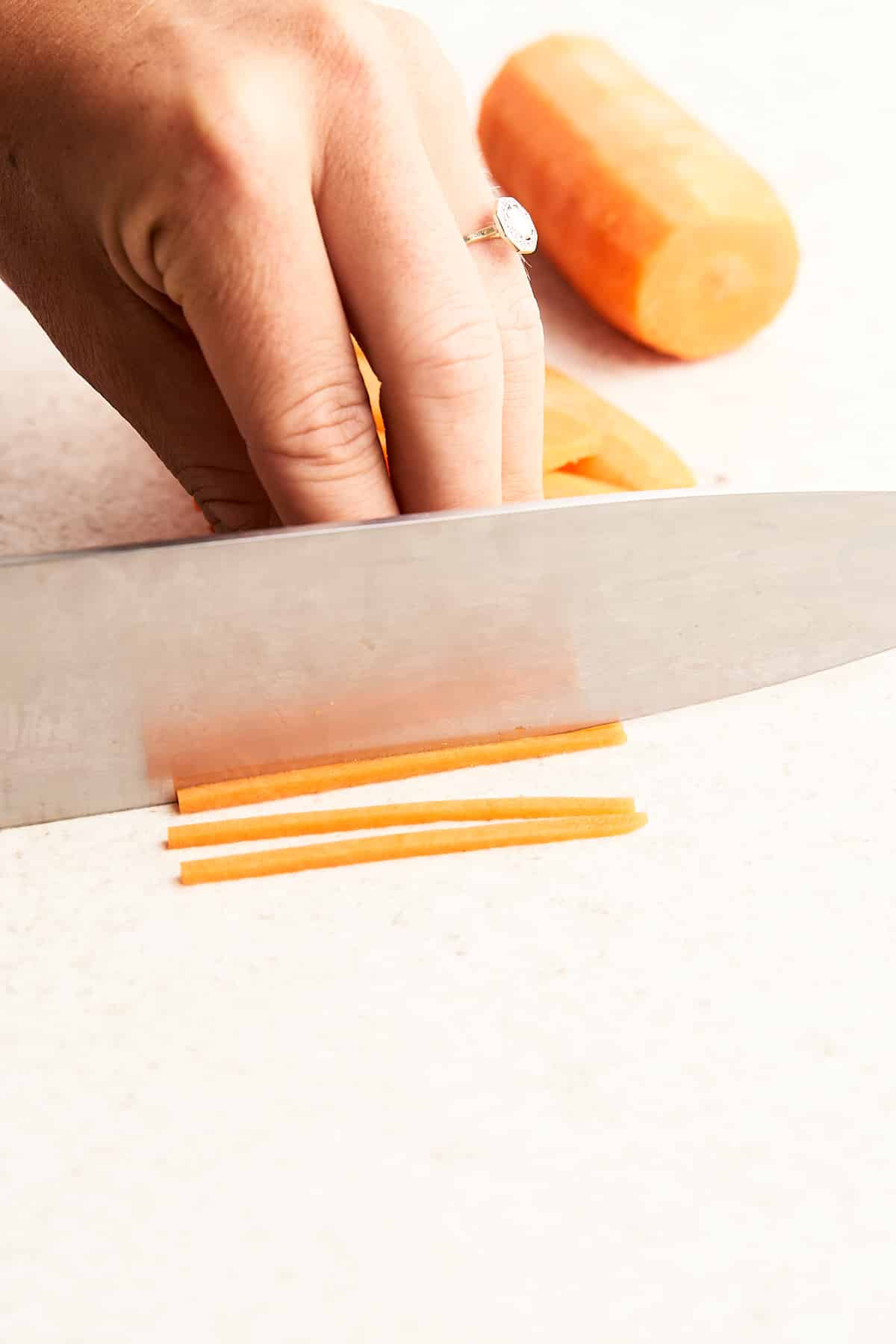
Tips for cutting carrots
Carrots can be finicky due to their shape and tendency to roll. Keeping this in mind, it’s important to take note of the following safety tips before jumping into cutting this root vegetable:
- Sharp knife: Just like anything related to chopping, ensure you have a sharp knife to create a safe cutting experience. Remember, always sharpen before cutting!
- Different sizes: Feel free to dice or julienne thicker or thinner based on your preference and what the recipe calls for.
- Hold tight: For a better grip, hold the thick end of the carrot when you’re cutting so nothing moves around.
- Cutting board: Use a sturdy cutting board, and make sure it’s on a flat surface to avoid any slips or cutting mishaps.
- Large carrots: For larger carrots, cut them into two or three separate segments before moving on to the specific cutting technique you require.
How to pick perfect carrots
Carrots are an incredibly hearty vegetable that generally holds up quite well. But, there are still a few key pointers to watch out for when selecting them at the store:
- Color: Look for carrots with bright, vibrant colors and no dark spots, cracks, or soft spots. Avoid carrots that appear quite white and dry.
- Firmness: Your carrots should be firm to the touch without soft spots.
- Shape: Purchase plump carrots without rootlets (little strings) on the bottom. If possible, buy your carrots in bunches with the fronds (carrot greens) still attached.
Storing cut carrots
If you find yourself with too many carrots on your hands, here are a few simple storage options:
- Room temperature: If you’re dealing with whole carrots, keep them in a cool, dry place for up to 4-5 days. If they’re cut, they should be refrigerated or frozen immediately.
- Fridge: Cut carrots should be wrapped in dampened paper towels and transferred to a plastic bag with small holes. This will prevent them from drying out, and they can be stored this way for about 6-7 days.
- Freezer: Add your cut carrots to a freezer-safe bag or container and store them for up to 3 months in the freezer. They will lose a bit of their crunch, so it’s best to use them in stir-fries, soups, or stews, rather than on fresh salads.
Storage Tip
Note: Don’t wash carrots until you’re ready to cut them for eating! This can lead to spoilage.
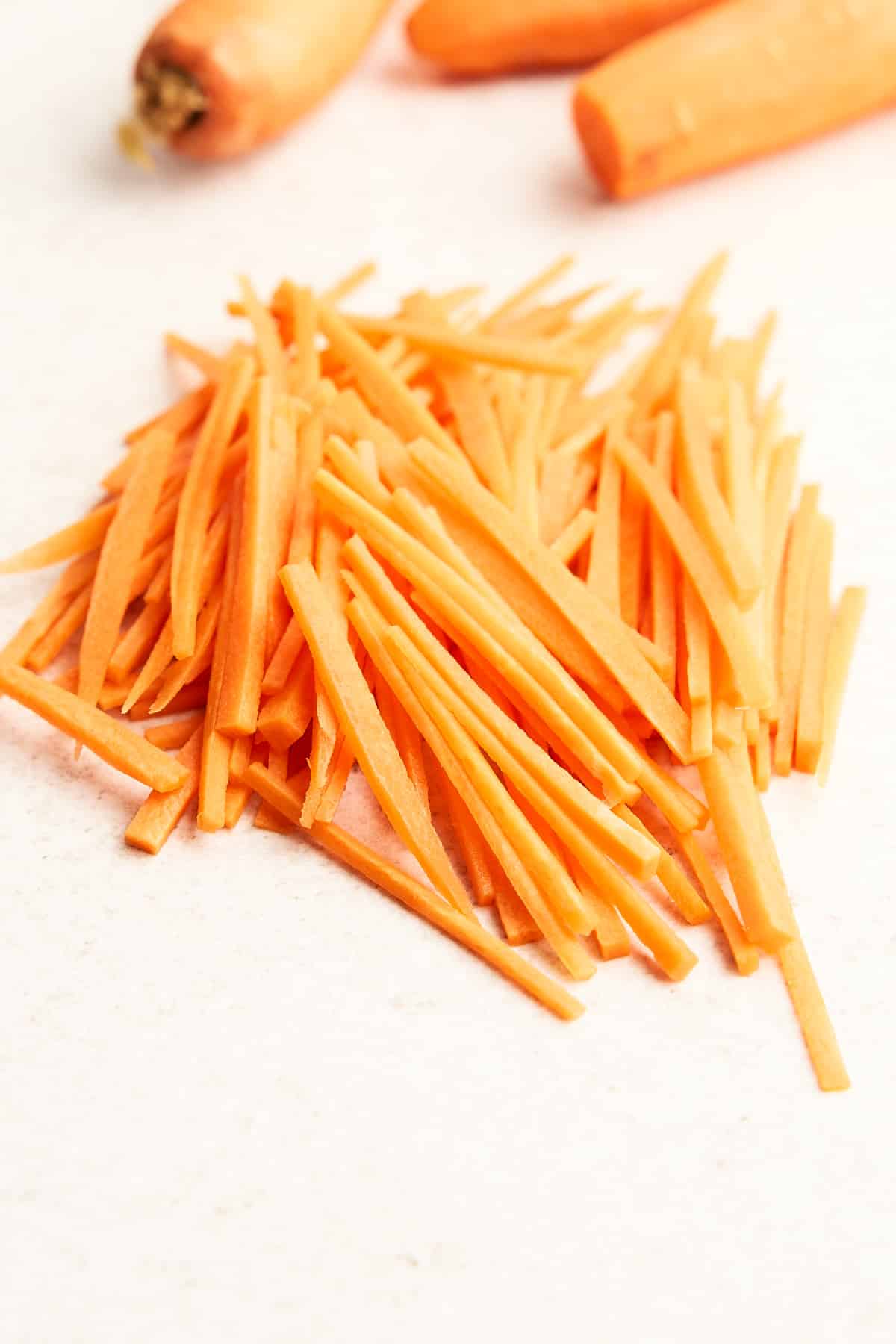
How to use carrots
You can add carrots to just about any recipe! Here are just a few of our favorite carrot recipes to get you started:
Carrot FAQs
No, you don’t have to peel carrots before eating them, but it’s important to wash and scrub them very thoroughly.
No, carrots that are peeled are equally as healthy as unpeeled carrots.
No, you should only wash carrots right before you’re about to consume them. If you wash them before storing them, it will affect their shelf life.
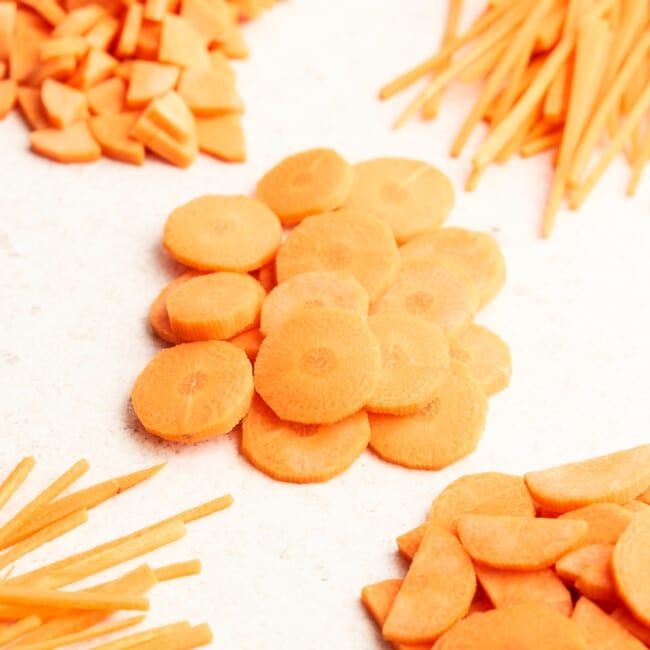
Ingredients
- 1 carrot
Instructions
- Peel: You have two options for carrots — scrubbing or peeling. Either way, give them a good wash. Then, use a vegetable peeler to remove the skin if you’d prefer.
Rounds
- With the carrot perpendicular to you, firmly grasp one end with your non-dominant hand. Using a rocker motion, slice the carrot into rounds as thickly or as thinly as the recipe you’re making calls for. You can also rotate the carrot slightly to make diagonal cuts.Optional: If you have one, a mandoline will achieve a more even thickness, but remember to keep your fingers well away from the blade! Use your carrot rounds for recipes like stews, stir-fries, soups, garden salads, or dehydrated carrot chips.
Half Moons
- With the carrot facing parallel to you, carefully slice it in half lengthwise, using your palm to press the knife all the way through. Place each half flat-side down, and rotate it the same as for the rounds. Slice the carrots into half-moon shapes as thickly or as thinly as you’d like.Optional: Once again, you can use a mandoline for this process, just be careful. Half-moon carrots are perfect for stir-fries, soups, salads, and stews!
Diced
- Start by cutting the carrot into halves just like before. Then, cut the carrots into quarters. If they are quite large, make 3-4 cuts. Rotate the carrot sticks, and dice them into smaller pieces using a rocker motion with your knife.Remember, use a claw grip and continuously move your fingers back as you’re cutting. Diced carrots are great for soups, stews, lentil loaves, chopped salads, and hearty pasta sauces.
Julienned
- Trim the ends off of the carrots, then cut them crosswise into 2 or 3 pieces (it depends on how big your carrots are). Thinly slice the pieces on one side, then flip the pieces on the flat side. Slice lengthwise to form thin slabs, lay each one flat-side down, and cut it into thin matchsticks.Once you feel more comfortable, you can stack the slabs to make cutting faster. You can also use a julienne peeler if you have one for a more convenient option! Add julienned carrots to salads or stir-fries.
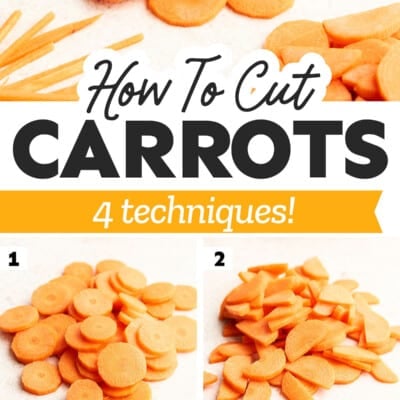
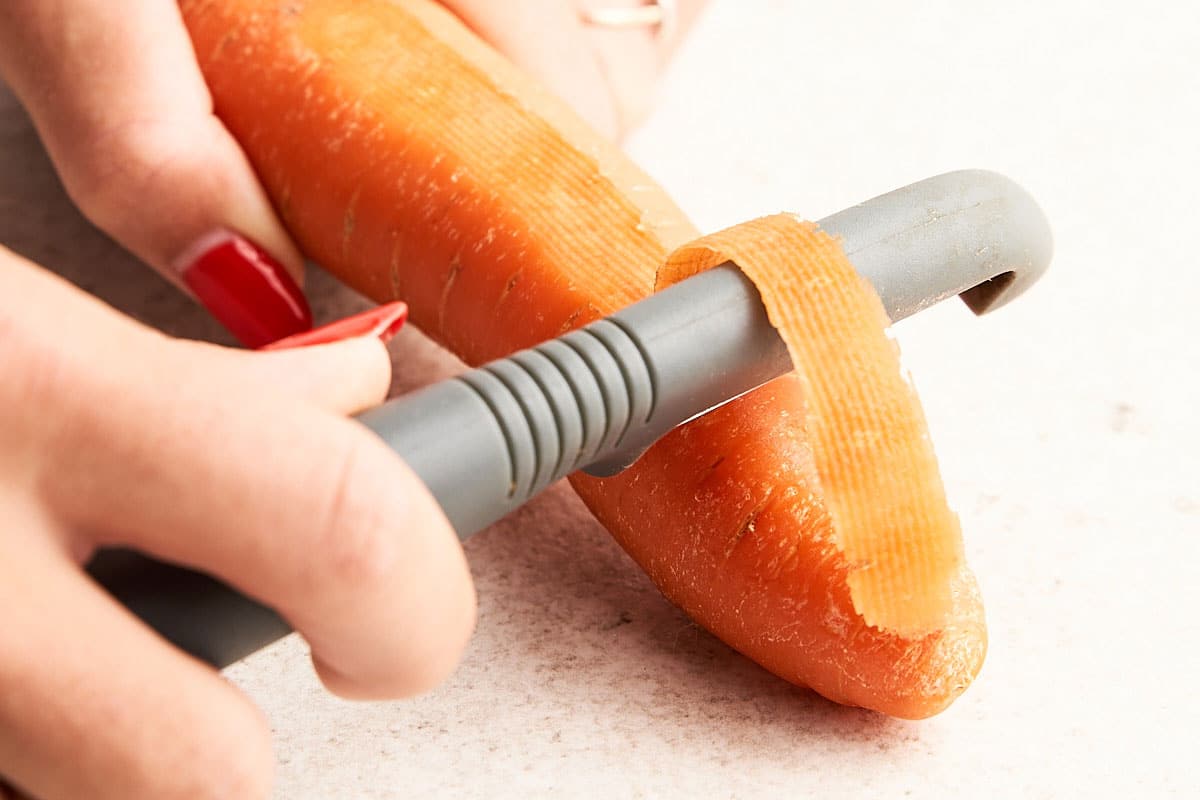
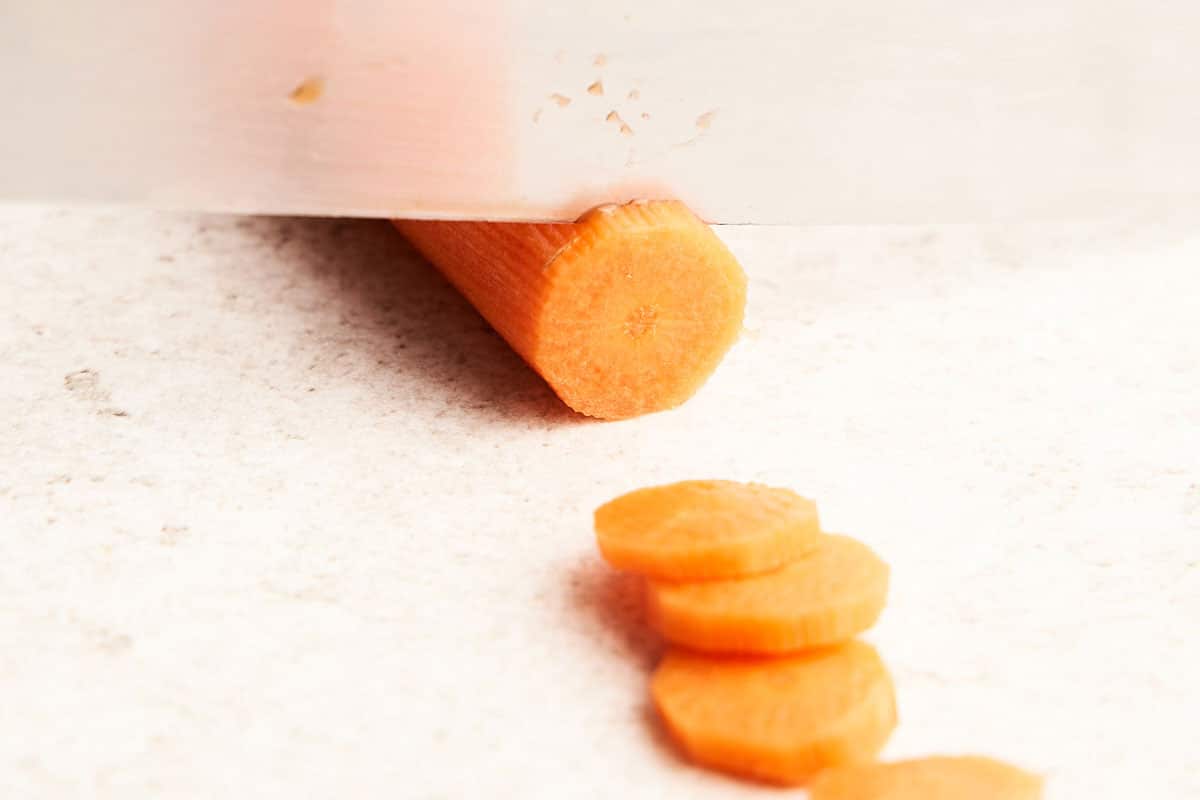
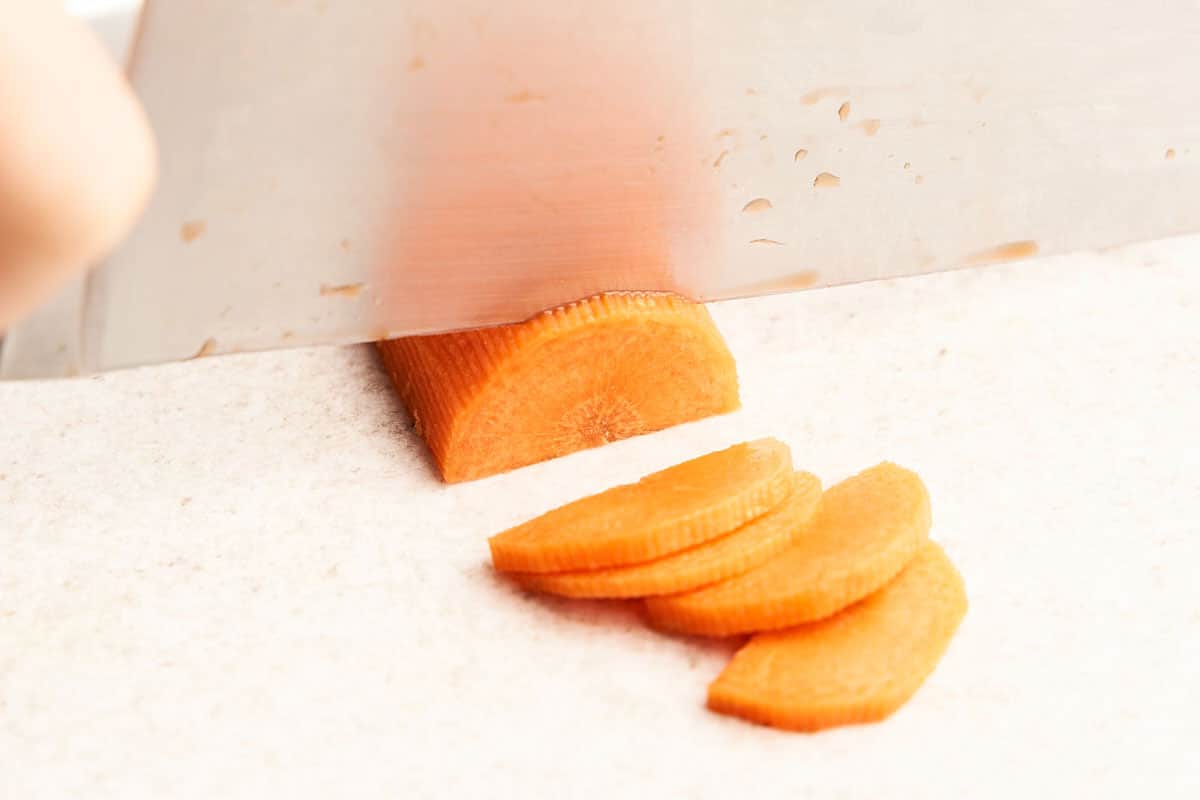
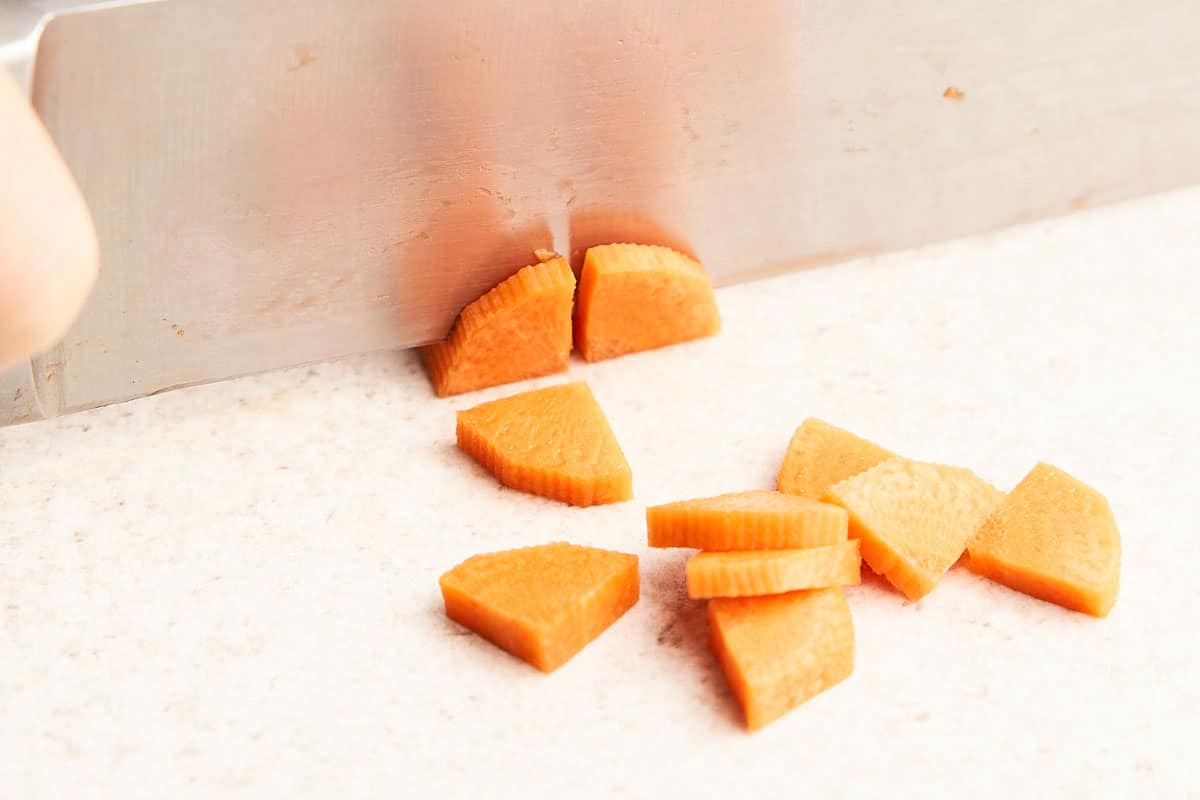
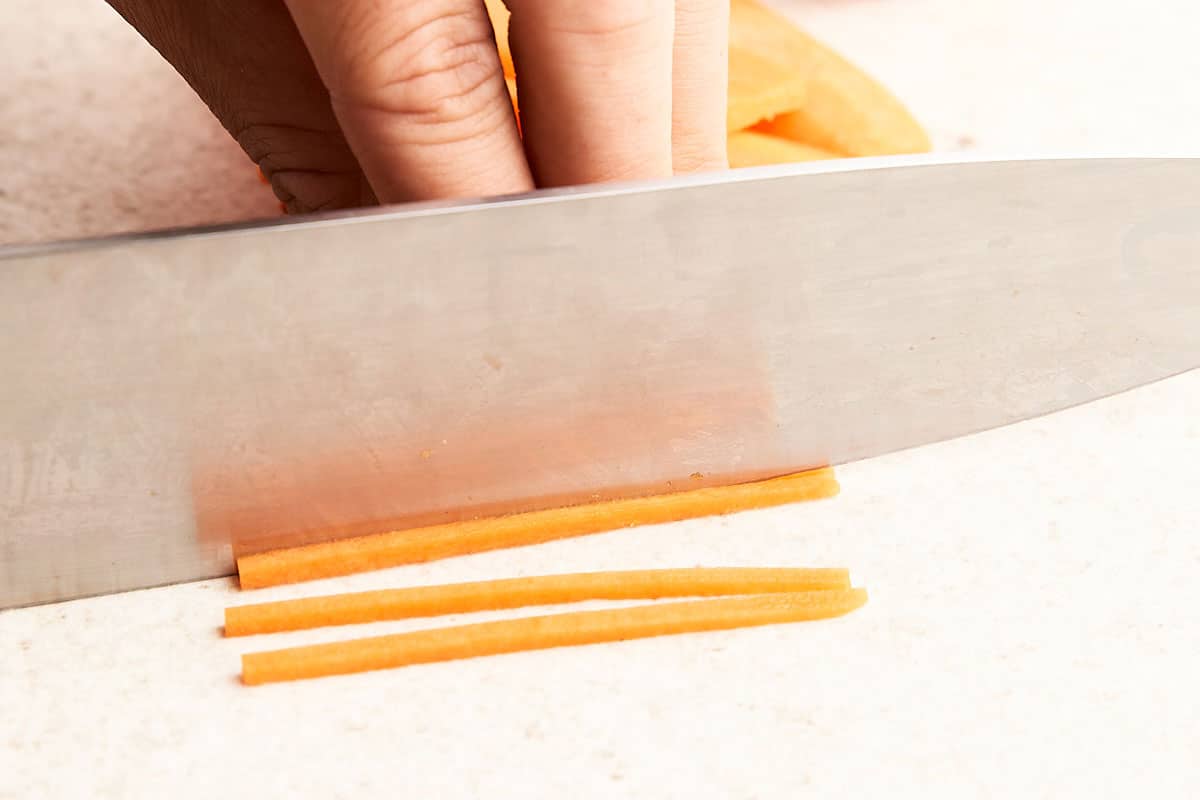
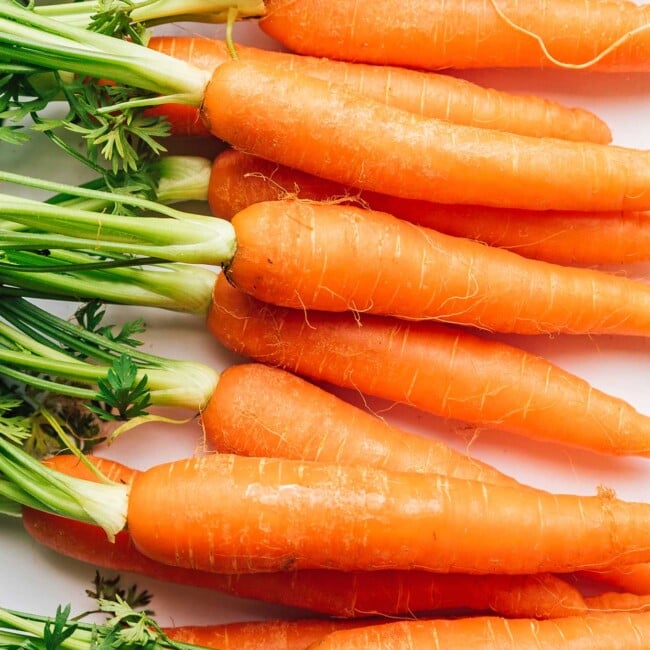

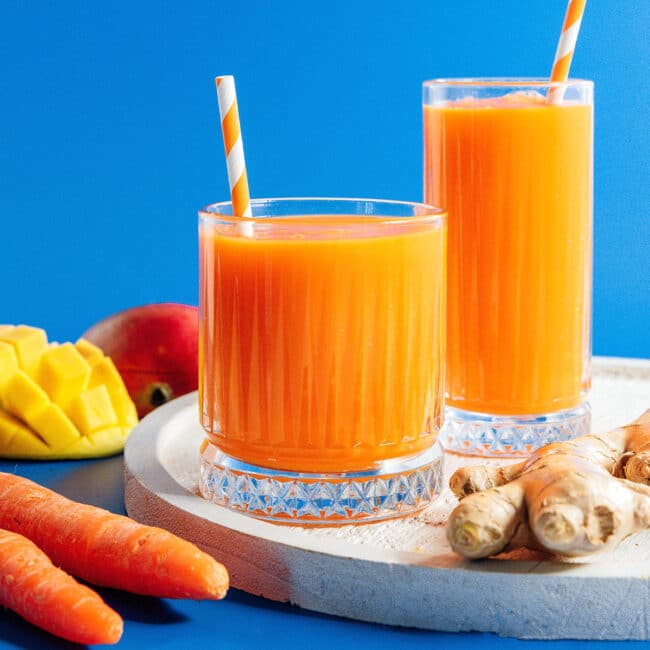
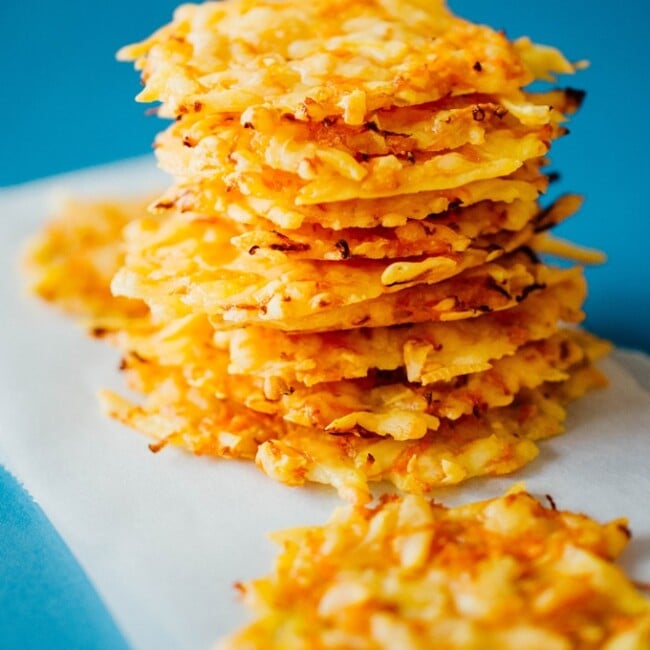
Leave a Comment